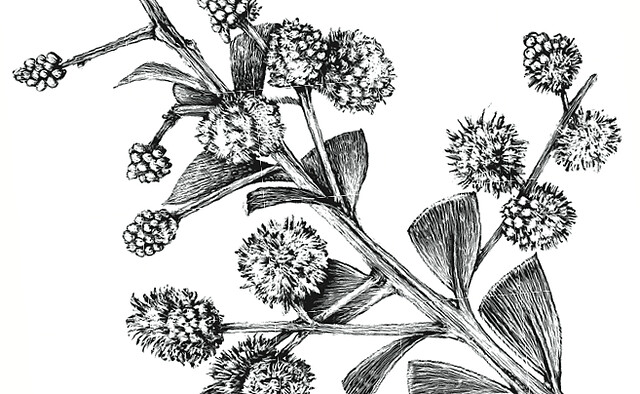Acacia cultriformis, known as the knife-leaf wattle, dogtooth wattle, half-moon wattle or golden-glow wattle, is a perennial tree or shrub of the genus Acacia native to Australia. It is widely cultivated, and has been found to have naturalised in Asia, Africa, North America, New Zealand and South America.[1] A. cultriformis grows to a height of about 4 m (13 ft) and has triangle-shaped phyllodes. The yellow flowers appear from August to November in its natural range. Its attractive foliage and bright flowers make it a popular garden plant.
Acacia cultriformis is a woody shrub with an upright or spreading habit that grows to 4 m (13 ft) in height. Branchlets may be bare and smooth or covered with a white bloom.[4] The mature trees do not have true leaves but have phyllodes that are crowded along the stems. The green to green-grey phyllodes are asymmetrical, with one leaf margin angled so the overall shape is triangular. They are 1–3 cm long by 0.6–1.5 cm wide.[6] There is a nectary at the widest part of the phyllode.[4]Flowering takes place from August to November,[4] and can be prolific on upper parts of the plant.[6] The rounded inflorescences are bright yellow and occur in groups of 2 to 25 in axillary 1–8 cm-long racemes. The later developing pods are straight or slightly curved, 3 to 10 cm long and 0.4 to 0.75 cm wide. They are flattish, with raised segments over the seeds.[4] The oblong seeds themselves are 3.5 to 4.5 mm long, black and shiny, with a clavate (club-shaped) aril.[6]
(From Wikipedia, February 2015)




